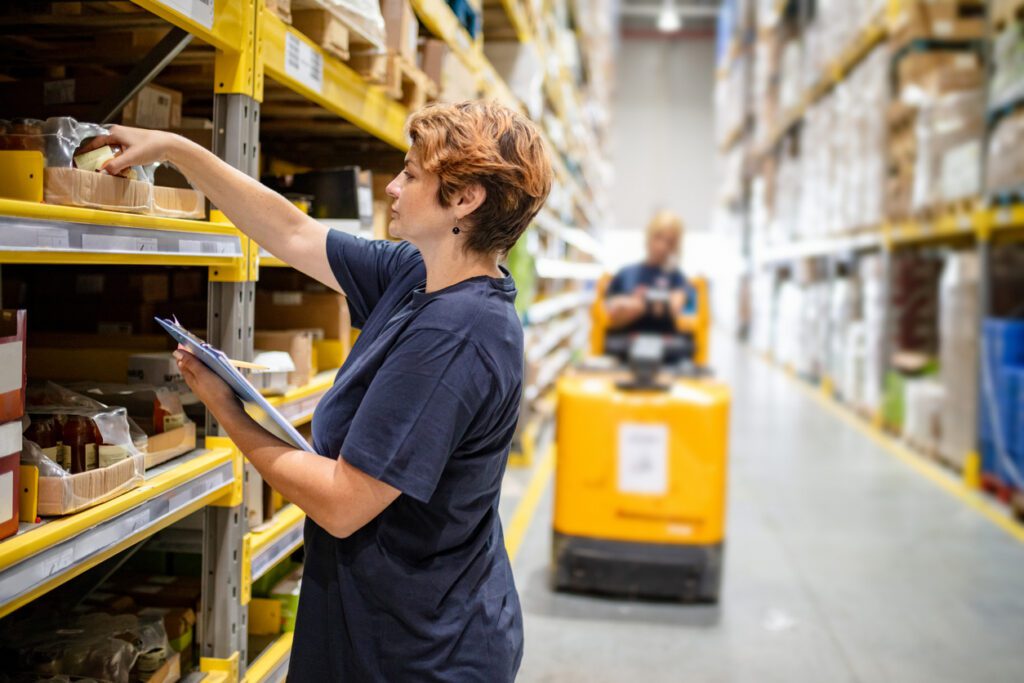Optimizing your warehouse’s order flow from pick to ship is critical for effective automation, and Tension Packaging & Automation helps identify and streamline processes—from order picking and packing to carrier rate shopping—reducing costs and boosting accuracy, all while supporting your business’s growth and efficiency goals.
In the first two parts of this series, we laid out preliminary steps that set the stage for making strategic choices on how best to incorporate automation into order fulfillment to increase accurate throughput, reduce labor costs, and position businesses to accommodate continued growth. First, we went through questions a business should be asking itself about its current operations when it has become apparent that manual processes aren’t keeping up with demand. Then we moved on to looking at numbers—the budget they’re able to invest in automation solutions, their current labor costs (factoring in overtime and expenses for temporary hires), and the expected time frame to realize a full return on investment.
The next step is to take a closer look at order flow—the steps necessary to select inventory to fulfill an order and prepare it to be handed off to the selected carrier. Order picking and packing methods vary, and understanding how your system works now and where improvements are possible is an essential part of selecting the right equipment to create a truly effective automation solution.
Breaking Down Your Order Flow
Order picking is the first part of the process to look at. In general, the internal goals for this step are to optimize the process by minimizing the distance workers have to travel, maximizing the use of the space you have available, minimizing picking errors to reduce returns, and minimizing on-the-job injuries. If your existing processes do a good job of this, then steps toward automation should be taken with an eye to integrating with what’s already working. If not, then incorporating automation can be an opportunity to rethink how orders are handled to make needed improvements.
Start with these questions: How does an order get picked? Do you use a cart system, with operators going to where goods are located to select what’s needed? Or do you use conveyor delivery? Or carton delivery? Once an order has been picked, how does that order get to the pack station? And what does the packer’s job entail to get that order safely packed and ready to ship?
Another important question to ask is do you rate shop for various shipping carriers? If the answer is no, then ask yourself: Do you need to? And do you want to? It is entirely possible that your business determined that one carrier offers the best rates for your requirements, and taking time to rate shop isn’t necessary to keep shipping costs down. Or you may simply not have rate shopped before because trying to do it manually, package by package, wasn’t practical. Automated rate shopping can help reduce shipping costs without adding a labor-intensive step to the process.
A related question is how are you capturing DIMs (dimensional weights)? Carriers will charge more for a package with a DIM weight higher than its actual weight, because it isn’t in their best interest to take up cargo space with low-cost large, light packages. Identifying the correct dimensions is important for accurate manifesting as well as for rate shopping, and it represents another area where automation can produce savings without burdening workers.
Packing can also benefit from solutions that improve throughput and free up valuable employee time from low-level, repetitive tasks. Right now, how many orders is a packer shipping out in a day? How is labeling done? And how is each package sorted to be delivered to the carrier? Each of these steps is another opportunity to strategically automate.
Finally, how many shipping carriers do you typically use? Do you always work exclusively with major carriers, or do you supplement with gig carriers during peak shipping times? The answers to these kinds of questions will help determine what equipment is necessary to support your requirements now while also giving your business room to grow and improve.
Expert Guidance in Your Automation Journey
If your eCommerce or pharmacy fulfillment company is just beginning to make a move into automation, you may not know what is possible, let alone the best strategy for optimizing your processes. Don’t worry—the team at Tension Packaging & Automation is here to walk you through your options, analyze your requirements to create a personalized solution, and provide the support you need to get the most out of your investment. To learn more, contact us here today.
